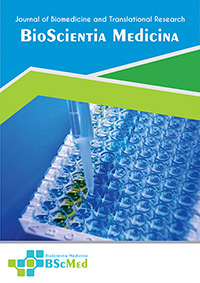Main Article Content
Abstract
Background: Knee osteoarthritis (OA) imposes a substantial global burden, leading to significant disability, particularly within the elderly demographic. Total Knee Replacement (TKR) stands as the definitive surgical intervention for advanced knee OA cases that have proven refractory to comprehensive conservative management. A thorough understanding of the multifaceted characteristics of patients undergoing TKR is paramount for the development and implementation of targeted, effective healthcare strategies and resource allocation. This study aimed to meticulously identify and describe these characteristics in a cohort of patients receiving TKR at a tertiary referral hospital located in Bali, Indonesia.
Methods: This investigation employed a descriptive quantitative cross-sectional study design. It involved a retrospective analysis of medical records pertaining to 54 patients who underwent primary TKR for diagnosed knee OA at Prof. Dr. I.G.N.G. Ngoerah General Hospital. The data collection period spanned from November 2023 to November 2024. The primary variables assessed included chronological age at the time of surgery, biological sex, body mass index (BMI) calculated from recorded height and weight, and the documented incidence of postoperative periprosthetic joint infection (PJI). All collected data were subjected to descriptive statistical analysis.
Results: The demographic analysis revealed that the vast majority of patients were female, accounting for 85.2% (n=46) of the cohort. The predominant age group for TKR procedures was between 50 and 69 years, encompassing 85.1% of patients; specifically, the 50–59 years category included 44.4% (n=25), and the 60–69 years category included 40.7% (n=22). A notably high prevalence of overweight or obesity was observed, with 70.3% of patients falling into these BMI classifications (overweight: 37.0%, n=11; obesity class I: 27.8%, n=15; obesity class II: 9.3%, n=5). Periprosthetic joint infection, a significant postoperative complication, was documented in 5.6% of the patients (n=3) within this cohort.
Conclusion: The findings of this study strongly indicate that advanced age, female gender, and an elevated body mass index collectively constitute a significant triad of risk characteristics among patients undergoing TKR for severe knee OA within this specific Balinese hospital setting. These observations underscore the critical necessity for focused preventive measures and tailored management strategies, particularly directed towards older women with increased BMI, to potentially mitigate the progression of OA and optimize the outcomes following TKR.
Keywords
Article Details
As our aim is to disseminate original research article, hence the publishing right is a necessary one. The publishing right is needed in order to reach the agreement between the author and publisher. As the journal is fully open access, the authors will sign an exclusive license agreement.
The authors have the right to:
- Share their article in the same ways permitted to third parties under the relevant user license.
- Retain copyright, patent, trademark and other intellectual property rights including research data.
- Proper attribution and credit for the published work.
For the open access article, the publisher is granted to the following right.
- The non-exclusive right to publish the article and grant right to others.
- For the published article, the publisher applied for the Creative Commons Attribution-NonCommercial-ShareAlike 4.0 International License.





